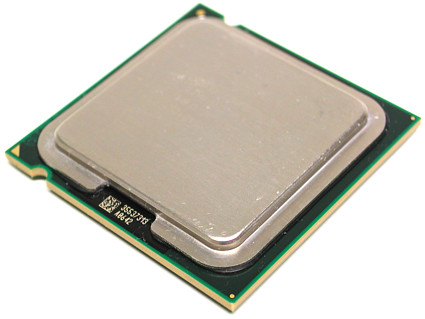Pentium EE Squeezes 3.73 GHz Out of NetBurst
NetBurst Rears Its Head One Last Time
Intel today has launched a new Pentium processor to compete against AMD's Athlon 64 armada: The Extreme Edition 965. The new Extreme Edition, which won't be available in channels until the first week of April, is Intel's latest device produced with its 65-nm process and is based on its double-core (code-named Presler) design.
As we have previously reported, Intel's Pentium D 900 and Extreme Edition 955 devices are based on a double-core architecture. Presler was Intel's first multi-core processor for the desktop and combines two Cedar Mill 65-nm cores in one LGA775 package - which is why we call it a double-core rather than a dual-core processor.
The processor launch comes at an interesting moment in Intel's history. During its Spring Intel Developer Forum earlier this month, Intel revealed many technical details about its upcoming Core Duo desktop processor (Conroe). It also allowed visitors to preview and benchmark systems based on the new CPU. Many publications took the opportunity to compare Conroe demo systems against overclocked Athlon 64 FX-60 machines, although both systems were Intel-assembled and pre-installed. For obvious reasons, we thus prefer to base our reports on results that we obtained ourselves. Conroe will also very likely be available only after AMD's Socket AM2 launch.
The Conroe architecture is expected to power all Intel solutions for many years following its launch, which makes the whole transition a significant affair. However, we don't expect the change of guards to happen before late in the summer. In the meantime, Intel's NetBurst processor architecture, or in other words, its Pentium family, will serve as the company's bleeding edge CPU line. However, Intel's Extreme Edition processors also cost over $1,000, which is out of the price range for most users.
Get Tom's Hardware's best news and in-depth reviews, straight to your inbox.
Current page: NetBurst Rears Its Head One Last Time
Next Page The Processor Landscape Today
Patrick Schmid was the editor-in-chief for Tom's Hardware from 2005 to 2006. He wrote numerous articles on a wide range of hardware topics, including storage, CPUs, and system builds.
